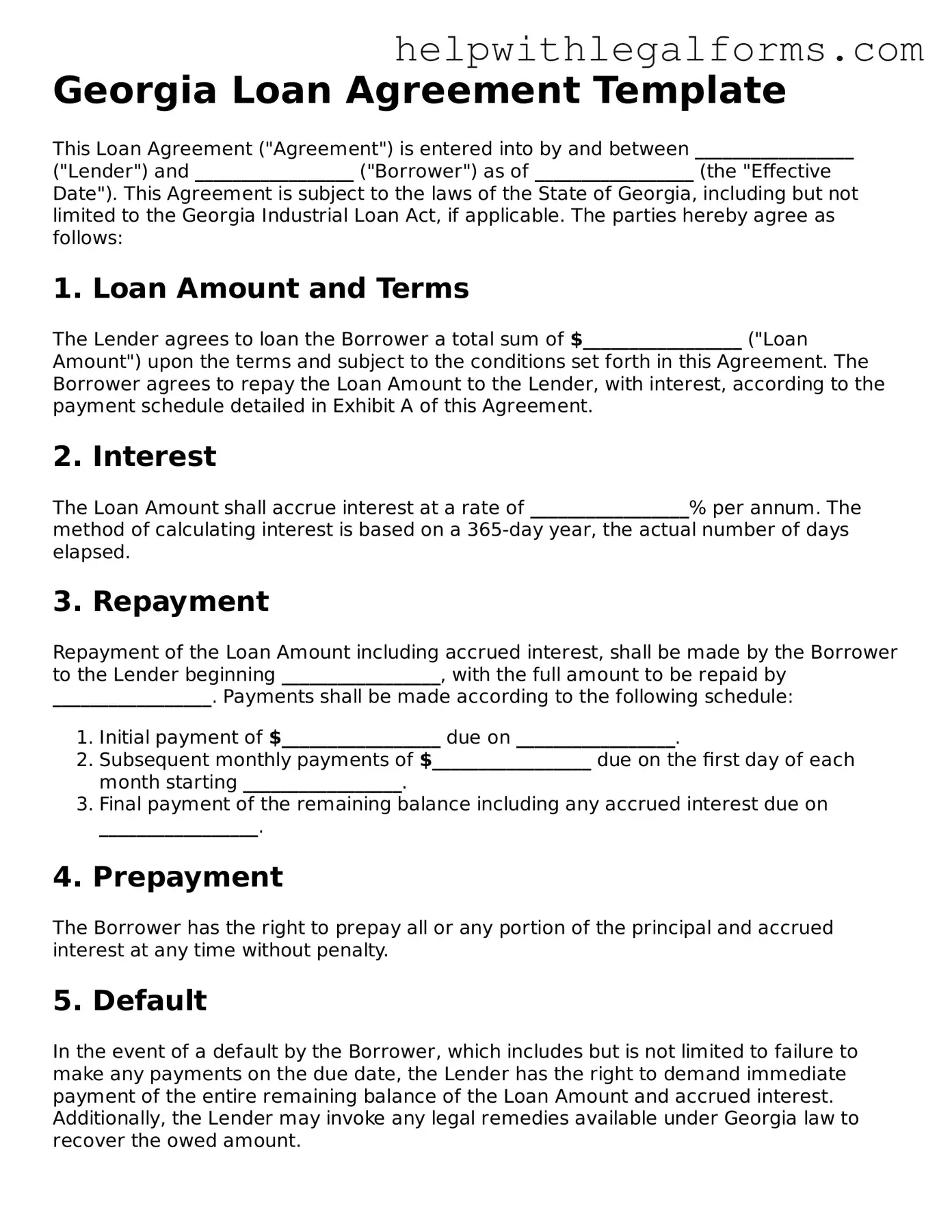Georgia Loan Agreement Template
This Loan Agreement ("Agreement") is entered into by and between _________________ ("Lender") and _________________ ("Borrower") as of _________________ (the "Effective Date"). This Agreement is subject to the laws of the State of Georgia, including but not limited to the Georgia Industrial Loan Act, if applicable. The parties hereby agree as follows:
1. Loan Amount and Terms
The Lender agrees to loan the Borrower a total sum of $_________________ ("Loan Amount") upon the terms and subject to the conditions set forth in this Agreement. The Borrower agrees to repay the Loan Amount to the Lender, with interest, according to the payment schedule detailed in Exhibit A of this Agreement.
2. Interest
The Loan Amount shall accrue interest at a rate of _________________% per annum. The method of calculating interest is based on a 365-day year, the actual number of days elapsed.
3. Repayment
Repayment of the Loan Amount including accrued interest, shall be made by the Borrower to the Lender beginning _________________, with the full amount to be repaid by _________________. Payments shall be made according to the following schedule:
- Initial payment of $_________________ due on _________________.
- Subsequent monthly payments of $_________________ due on the first day of each month starting _________________.
- Final payment of the remaining balance including any accrued interest due on _________________.
4. Prepayment
The Borrower has the right to prepay all or any portion of the principal and accrued interest at any time without penalty.
5. Default
In the event of a default by the Borrower, which includes but is not limited to failure to make any payments on the due date, the Lender has the right to demand immediate payment of the entire remaining balance of the Loan Amount and accrued interest. Additionally, the Lender may invoke any legal remedies available under Georgia law to recover the owed amount.
6. Governing Law
This Agreement shall be governed by and construed in accordance with the laws of the State of Georgia, without regard to its conflict of laws principles.
7. Entire Agreement
This document and any attached exhibits constitute the entire agreement between the Lender and the Borrower regarding this loan. Any modifications to this agreement must be made in writing and signed by both parties.
Signatures
By signing below, the Lender and the Borrower agree to the terms and conditions outlined in this Agreement.
Lender's Signature: _____________________ Date: _____________________
Borrower's Signature: _____________________ Date: _____________________
